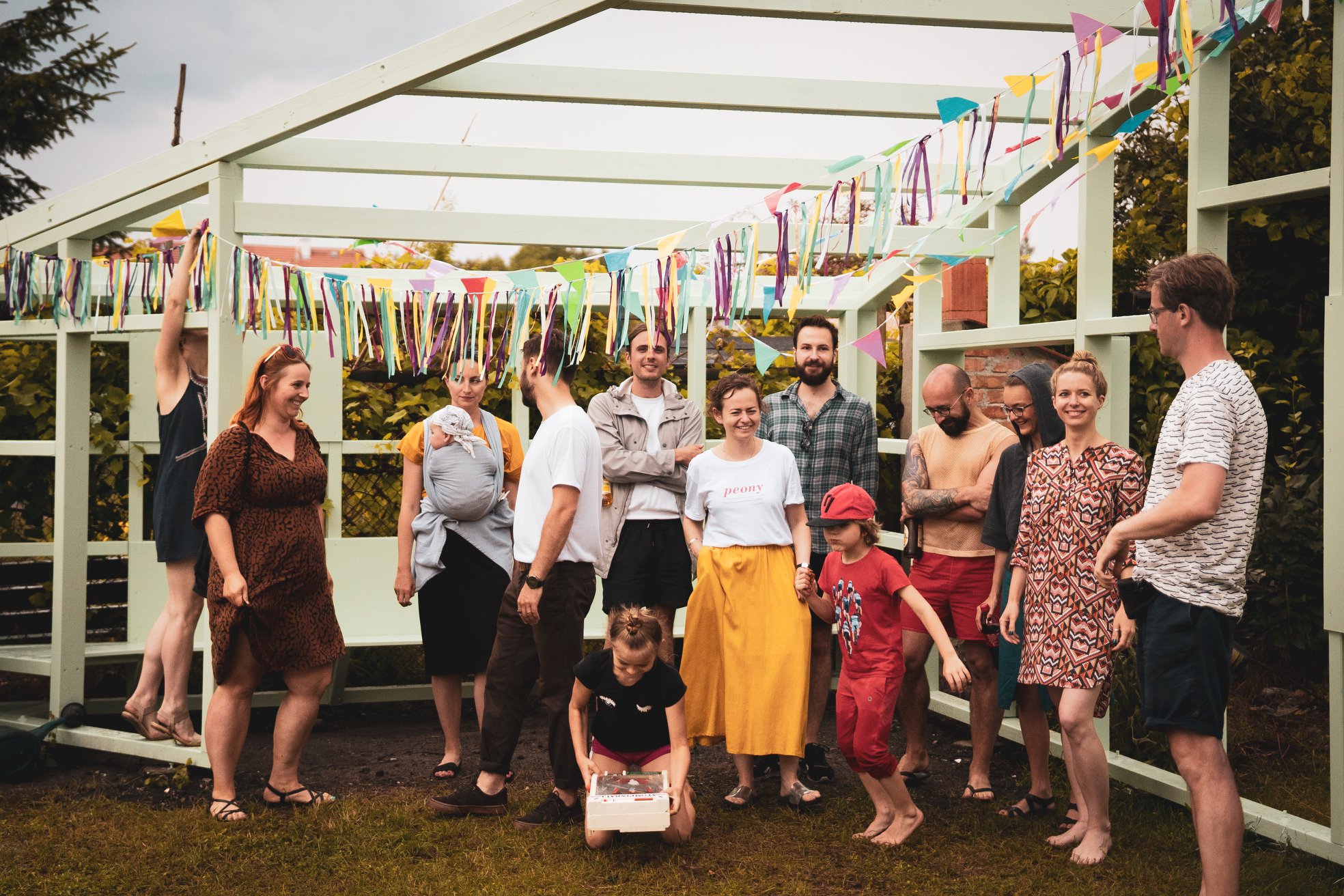foodsystemssocialinovators - restart.utopia.sk
Food system social innovators. Experiences from Wroclaw, Poland
Marta Sylla, Małgorzata Świąder, Monika Onyszkiewicz1. Introduction
2. Challenges of the sustainable food systems
Food systems are overly complex systems that are constantly evolving. According to FAO food systems include “the entire range of actors and their interlinked value-adding activities involved in the production, aggregation, processing, distribution, consumption and disposal of food products that originate from agriculture, forestry or fisheries, and parts of the broader economic, societal and natural environments in which they are embedded”. Food systems include many actors whose work is connected to food supply chains starting from food production to waste management. However, food systems include also the socio-economic and environmental settings in which the supply chain is taking place. The socio-economic aspects include cultural background, purchasing power/welfare, education and religion/beliefs, but also equity and social justice in terms of nutrition and food affordability. The environmental setting is connected not only to the most straightforward production place of food, but also the impact on the environmental of the food waste as well as the footprints and emissions of food system. The extensive conventional agricultural production has negative impact on the biodiversity, soil health and other ecosystems through for example nutrients but also pesticides leaching. Minimising food waste represents an important challenge for sustainability of food systems, as about one third of food for human consumption globally is lost (FAO, 2011). The global carbon footprint of food is high as the supply chains are getting longer and food is increasingly processed, therefore the carbon emissions from transportation and machinery manufacturing also surge. Still meat diet, especially the one including beef, generates the highest footprint of all diet options (Poore and Nemecek, 2018). On the farm level the highest share of emissions in the crop production comes from the nitrogen fertilizer use (Hillier et al., 2009).
3. Food system innovations
When we hear the word “innovations”, we usually think of technological devices or software and applications. These are, indeed, innovations, but there is more. According to Oslo Manual (2018) we may distinguish product, process, organisational and marketing innovations. There is also a social innovation type that aim to improve the societal well-being. According to the Guide to social innovation of the European Commission (2013) “social innovation can be defined as the development and implementation of new ideas (products, services and models) to meet social needs and create new social relationships or collaborations.” Social innovators are motivated by shared values to create social change. Societal attitudes and behaviours towards food are crucial to improve the sustainability of today’s food systems, i.e. by upscaling plant-based diets, reducing food waste, empower women as food system social innovators.
4. Social food system innovators in Wroclaw
Table 1: Food system social innovators
| No | Name | Description | Element of the food supply chain | Social aspect |
| 1 | ‘Ołbiński Ogród Otwarty’ (Eng. Olbin’s Open Garden) | NGO community gardening in the allotment areas | Food production | Education, community building, awareness raising |
| 2 | Fundacja Instytut Rozwoju Pszczelarstwa (Eng. Institute for Beekeeping Development) | Urban beekeeping NGO | Honey production | Education, awareness raising |
| 3 | Coop124/Earth Market/Goat farm | The association of local food producers and service providers | Food production, distribution and selling, cooperative as an example of short food supply chain | Community building |
| 4 | Foodsharing Wrocław | Nationwide initiative aimed at reducing food waste | Food waste | Awareness raising, education |
| 5 | ‘Z glodu’ (Eng. From hunger) | Action group aiming at redistributing the fresh food waste to people who would eat it | Food waste | Awareness raising, education |
Each food system starts in the soil, where all basic ingrediencies for the healthy diet come from. People who have been living in the city seem to lose the connection with soils and therefore, the only food production opportunity for them is in gardens. Gardens in the city take various forms, i.e. there are gardens attached to single family housing, allotments, or community gardens. Ołbiński Ogród Otwarty is a non-governmental organisation that runs a community garden in the allotment area. The community gardening in Poland is very scarce comparing to Western Europe. It might be due to the ownership need, especially when it comes to land, that is rooted deep in the culture of Polish people. The allotment garden initiative started as the response to the possibility of a land use change from green areas to the multiple housing estate. The Ołbińki Ogród Otwarty opens the gates of the allotment garden to the community that wants to share its fruits but also work. Their educational and awareness raising programmes are oriented inside-outside, by first inviting people in to co-create the space and atmosphere of the place, by for instance creating poetry for allotments, and then sharing of crops, tools and recipes as well as combining forgotten practices of urban gardening with the current problems faced by citizens, such as the atomization of society, climate change and a consumer lifestyle.
Each food system starts with soils, but without pollinators we could not grow the abundance of food. The second innovator works in the aim to increase the common understanding of the importance of bees as pollinators and change the perception of green areas in the urban cores. The NGO takes care of several apiaries in various locations, such as on the rooftops of museum, theatres, public institutions, or botanical garden. The educational programmes include awareness rising for kindergarten and school pupils. The honey produced in the apiaries is a gift to hosting institutions and citizens to promote the idea.
The third social innovator is a farm that specialises in products from goat’s milk. But this is not why they became social innovators. They gathered and activated local producers to present their products and skills during the ecological event called the Earth Market. The event proved to be extremely successful and opportunities to expand were coming from different business initiatives. The community, however, decided to keep the event local and to focus on quality instead of quantity. They keep local and true about their products by knowing the origins of the ingredients of their products. The owners of the farm are extremely creative, i.e. in the combinations of goat milk products and edible weeds. The community proved resilient to various temptations to expand or shocks as the pandemics. They stay strong and adapt to new situations, by for example applying new mobile formula of the Earth Market.
The last two innovators are active at the end of the food supply chain which is food waste. First of them is a food sharing grassroot initiative that organises infrastructure (i.e. open access fridges) and promotes sharing of the surplus food. The background idea of the initiative is to teach people to respect the food. The volunteers work to reduce the uncertainties of giving away surplus food for free, as it seems that it is still safer and easier for citizens and business organisations to throw food away than to give it away. The aim is to change the mindset in relation to food sharing, i.e. to stop feeling shame to offer the excess of food and take it even when you can afford it.
The last innovator is fairly new initiative in the city that started as a response to the hardships of the pandemic times. The overarching goal of the initiative is to satisfy the basic human need of avoiding hunger by making use of food that is unattractive enough to be sold at stores. The main aim is to prepare food for people in need with the plant-based ingredients that would be otherwise thrown to trash. So far, the volunteers are looking for a kitchen premises to cook, but in the meantime, they redistribute the food to the people in need.
5.Conclusions
Acknowledgements:
This research, including interviews with the innovators, was carried out within the FoodSHIFT 2030 project which has received funding from the European Union’s Horizon 2020 research and innovation programme under Grant Agreement No 862716.
References
European Comission, 2013. GUIDE TO SOCIAL INNOVATION, Regional and Urban Policy.
High Level Panel of Experts on Food Security and Nurition, 2017. Nutrition and food systems.
Hillier, J., Hawes, C., Squire, G., Hilton, A., Wale, S., Smith, P., 2009. The carbon footprints of food crop production. Int. J. Agric. Sustain. 7, 107–118. https://doi.org/10.3763/ijas.2009.0419
OECD/Eurostat, 2018. Oslo Manual 2018: Guidelines for Collecting, Reporting and Using Data on Innovation, The Measurement of Scientific; Technological and Innovation Activities.
Poore, J., Nemecek, T., 2018. Reducing food’s environmental impacts through producers and consumers. Science (80-. ). 360, 987–992
https://doi.org/10.1126/science.aaq0216

Community gathering at the garden. Photo by Ołbiński Ogród Otwarty.
